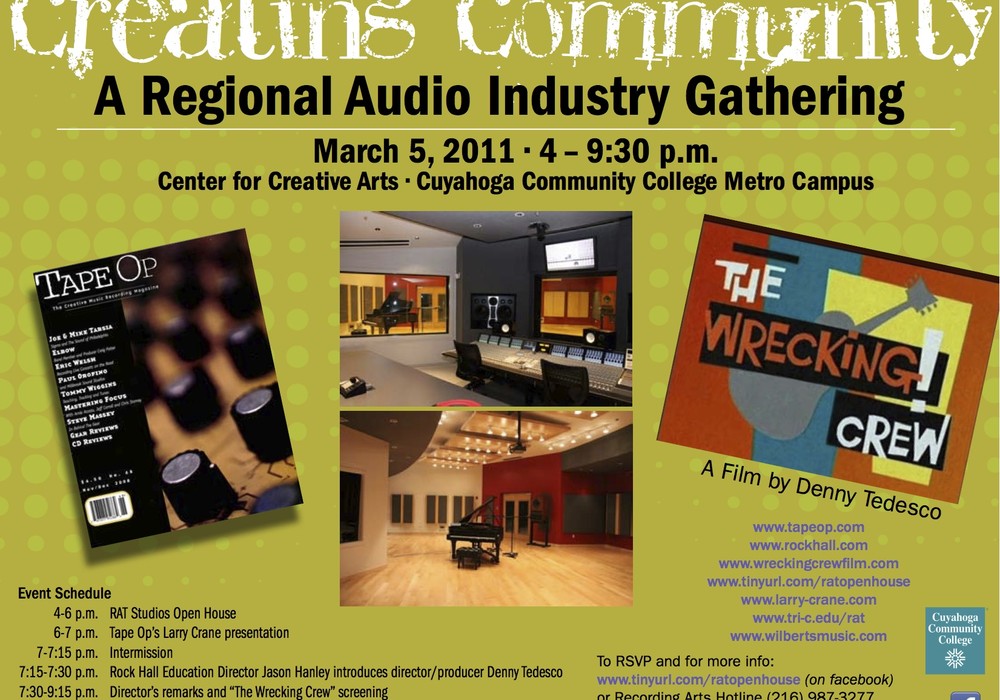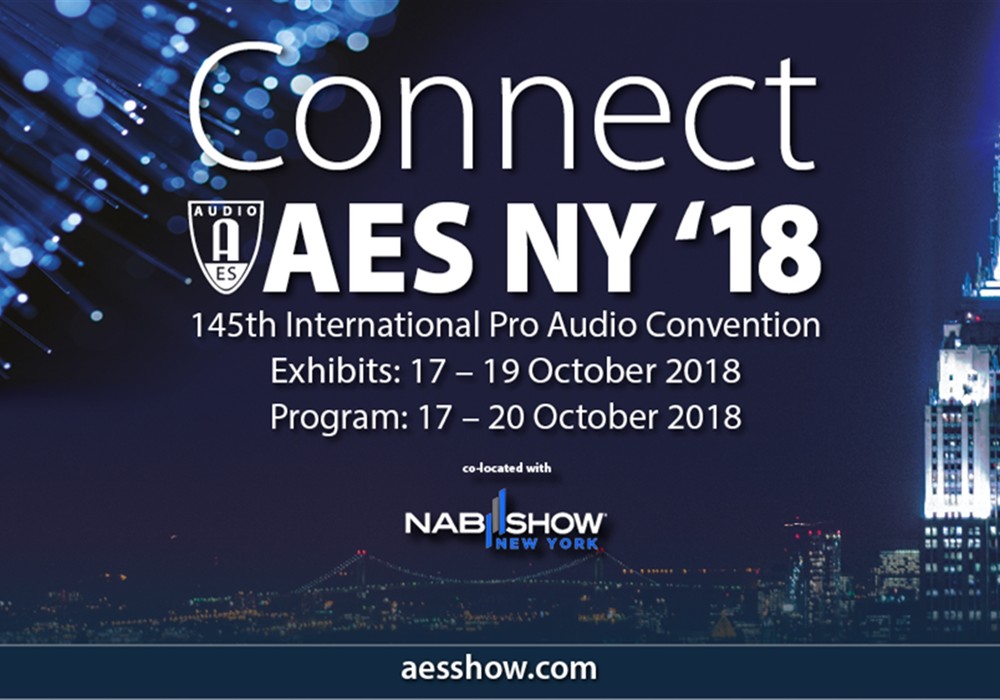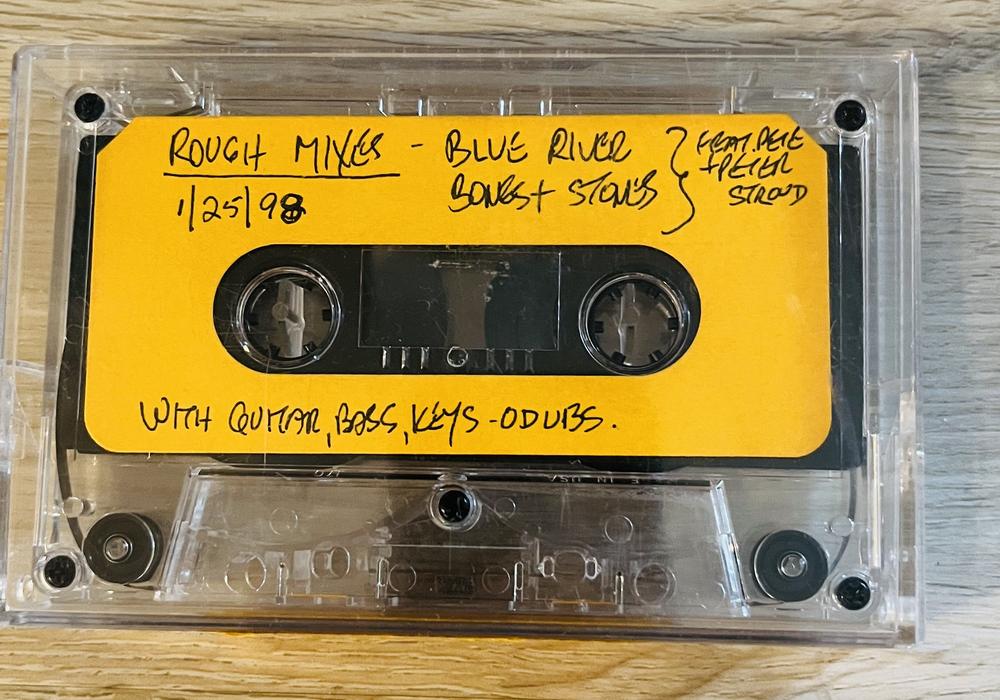Dear Tape Op Reader,
We wanted to let you, the folks we make this magazine for, aware of a fundamental change in our business.
Short version: We are cutting our ad rates nearly in half.
Why?
Here's the long version: Tape Op is an advertiser-supported publication. This means the money we make from the advertisers in the magazine covers the cost of us making the magazine, printing it and mailing it to our readers at no cost to you. This is a different business model from a publication that covers production costs primarily through subscriptions and newsstand sales. Early on we made the decision to not focus on newsstand sales for two reasons. One, Tape Op is a niche publication, meaning most magazine outlets, like supermarkets for instance, wouldn't carry Tape Op. Secondly, newsstand distribution is very inefficient. The term "Sell Through Rate" means how many copies of the magazine put into newsstand distribution actually get sold. The remainder are discarded and (hopefully) recycled. A sell through rate of 25-50% is considered quite good. In other words, at least 50% of the copies printed are thrown away. This expense is factored into the business model, and somebody (advertisers or subscribers) pays for that. It is also a real waste of resources (paper and shipping) which is certainly not very "green."
So, we made the decision to become an advertiser-supported publication that mails directly to our readers. We are proud of the fact that we can account for nearly 95% of the magazines we print, and we have very few copies discarded.
But, it's no secret that a lot of things have changed since we started publishing Tape Op in 1996. The economy is not as strong, the publishing industry is in decline, and online options abound. We feel it's time to make a change. If you've been reading Tape Op (and other audio and music magazines) for any length of time, then I'm sure you've noticed that we, along with all the other magazines, are printing fewer pages than we did 4 or 5 years ago. We used to print issues that were around 100 pages, give or take a few 8 page forms. Many of the more established audio magazines printed 200+ pages. Currently Tape Op and most of the other magazines are printing 68 page magazines. (Tech note: That's two 32 page forms plus a four page cover form, a very efficient page count in the printing industry). The reason for this is that we, and everybody else, are selling far fewer ads. The basic formula for magazines is that each page of ads pays for a page of editorial. This is called the ad to edit ratio. It will vary between 60/40 and 50/50 in one direction or the other, but in an advertiser-supported publication it will never deviate very far from that number and keep a publication in business if the business needs to actually sustain itself.
So now that you know all there is to know about magazine publishing, let's discuss selling ads. Back in the days of Mad Men and even as recently as the year the iPod was released, print ads were big business for big magazines. They supported not only the magazines themselves, but additional businesses like ad agencies, graphic design firms, etc. Part of the ad agency's job was to beat up the magazine's ad sales staff on the rates so they could tell their clients what a great job they were doing for them by getting them such good rates. For some companies this made a lot of sense in both directions, as an ad agency might buy quite a few pages in lots of different publications for their various clients. The ad sales staff knew how this system worked, so they made sure their rates were much higher than they really expected to get in order to have bargaining room. Typically they might take anywhere from 10-40% off the ad buy, depending on the size of the buy. Discounts would be based on the size of the ad (smaller ads cost more per square inch than bigger ads) and how many issues the advertiser commits to advertising in (a long term commitment makes it easier for a magazine to plan out issues and predict their overhead).
Fast forward to 2012. The economy is down, music sales are down, studios are going out of business, gear manufacturers are going out of business, hardware sales are down, software sales (and piracy) are up, print publications are going out of business, ad agency reps want to do online and viral advertising and think outside of the box, Avid wants you to live in the box, print is dead, the Internet is the future, paper costs have gone up, postage has gone up, and printed ad rates for advertising have gone up. The industry is at a point where it's not really working within the reality of the current economy or the supply and demand of the marketplace. The old way of doing business (having a higher rate than you expect to get) is still in place, but the discounts over that "fake" rate are now as deep as 90% off the rate card. How can a business survive if they're only able to get 10% of their asking rate? Well, some advertisers don't know how "the game" works so they don't know to ask for a discount, so a magazine might still occasionally sell some ads at 80% (or even 100%) of the rate card pricing, so things tend to average out. Maybe you're averaging around 50% of rate card, and if you keep raising your rates each year, hopefully you can sustain that number.
There's a problem with that from our point of view however. The bigger companies - larger companies owned by venture capital firms and stockholders - are the ones who should be able to afford to pay something closer to rate card. These companies however are the ones who know how the game works, and they expect the deepest discounts. If you want their ads (and the income it brings in) you have to negotiate their discounts. The smaller companies - the ones run by one or two people with a good idea and a great product - don't know how the game works. They take one look at the rate card and come to the conclusion that they just can't afford to advertise their product or service. Without getting into a big discussion of whether or not advertising works (I think it does, but if you spend too much on advertising, the cost will outweigh the benefits), I think it's fairly safe to say that if nobody knows about your product or service, it will be hard for you to sell it. I feel strongly that Tape Op is an excellent way to get people to know about products or services in the music recording realm, and I'll tell you why when I conclude this long winded rant.
Here at Tape Op, we feel that smaller companies with great ideas or products are essential to the industry and are often what drives innovation and change in a positive direction. But the current ad sales climate is stacked against these smaller, newer companies. I've had many conversations with our advertisers in which, as I get a sense of the fact that they are a smaller, startup company, I explain "the game" to them and offer them a discounted ad rate, even though they were ready to pay a higher rate. To me, this makes sense because if I give them a fair, reasonable rate, with a little bit of luck, their business will do well and they will be advertisers in Tape Op for a long time. If I just gouge them for the highest amount of money I can get out of them, they may not do as well, and the money they spent on ads might be part of the reason they are not successful. I don't want to do business that way. I want Tape Op's relationship with our advertisers to be mutually beneficial. Please don't read into this that I, or Tape Op, think this means bigger companies are bad, because that's not what we are saying. There are a lot of really great, well-run, large companies in the audio industry that make great gear at all price points. A well-run, large company at its core likely makes great products and treats it's employees fairly, and that's why they're still in business. And the truth is even large companies have smaller budgets to work with. Hopefully our new lower rates will allow them to buy more ads in Tape Op which means you the reader, get more editorial pages.
When I'm able to actually talk on the phone with some of the smaller companies, things work out fine. I really enjoy talking to most of our advertisers and I want to help them make good decisions on their marketing. But I am always busy, and not always easy to reach. Our editor, Larry Crane, and I do not work on Tape Op full time. No one does. Besides working on Tape Op, we both run studios and engineer sessions, so it can be hard to reach us at times. When people look at our rate card online, they are seeing the "fake" rate. I'm tired of that. It doesn't make any sense in our current economy or with the current state of the music, audio and recording businesses. After a decade of doing this, I am really tired of playing "The Rate Card Game" and I don't want to play it anymore. Going forward, advertising in Tape Op will be more transparent and simple.
1. The full page rate for a one year commitment is $2500. Single issues are an extra 15%.
2. Fractional ads are based on the above rate. In other words, a half page ad is $1250. The old way of selling ads charges more per square inch for the smaller ads, which makes it less affordable for newer, smaller companies to do marketing.
3. There is no overly inflated charge for color ads over black and white ads. Most magazines print color throughout and the only extra charge on a color ad on an otherwise black and white page is the plating charge which is about $50. Our color ads are $50 more than black and white ads regardless of size.
4. Big or small, everyone pays the same rate. No more games. And we will be dropping the rate of any current advertisers who are paying more than our new rates effective immediately.
That's it, simple and transparent. You can download the new rate card, which is effective immediately, at:
We really do hope that if you or someone you know has a product or service you'd like to advertise, you'll consider Tape Op. We currently have the highest print circulation of any recording magazine in the world. You can also see some competitive rate comparisons at the above link.
Two other statistics we are very proud of is that 79% of our readers keep each issue indefinitely and 46% of our readers don't read any other recording magazines.
And finally in one last piece of news, Tape Op is now available on the iPad (including all ads) and will soon be available on the Kindle Fire, iPhone and Android tablets.
So, please spread the word about Tape Op's new advertising rates. We're gambling that this industry is actually fairly healthy, but only if we all work together. Thanks for taking the time to read this and for reading and supporting Tape Op Magazine.
John Baccigaluppi
Publisher






